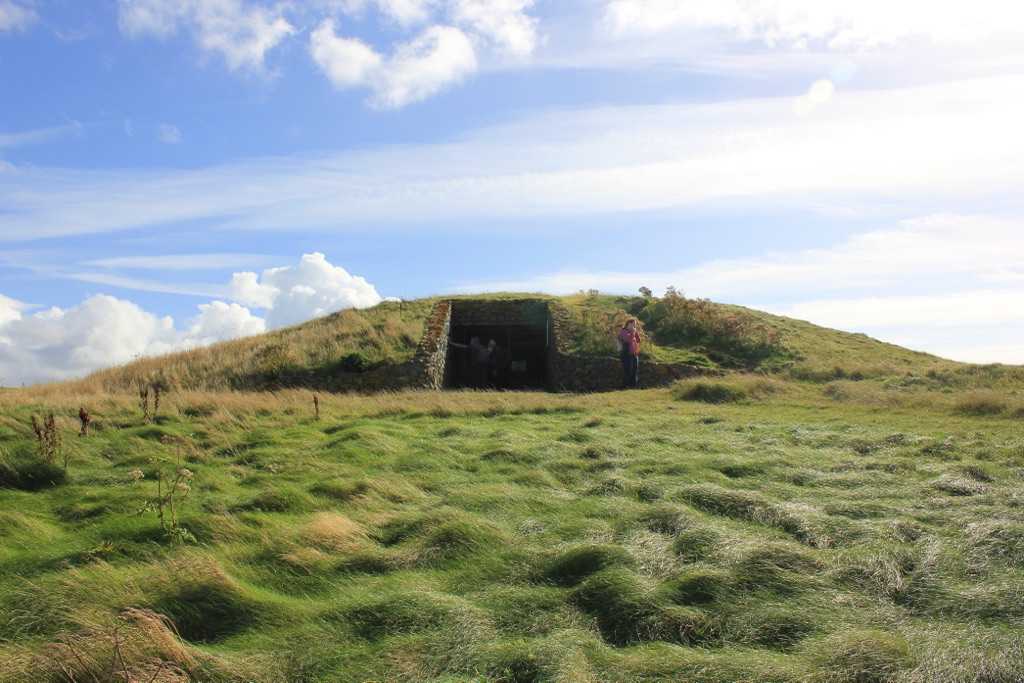Barclodiad y Gawres is a significant prehistoric site located on the western coast of Anglesey, Wales. It’s a Neolithic burial chamber, or passage tomb, known for its cruciform layout and richly decorated stones. The name translates to ‘The Giantess’s Apronful’ in English, hinting at the folklore surrounding this ancient monument. Discovered in the 1950s, it has since been partially reconstructed, allowing visitors to appreciate its historical importance. The site offers a glimpse into the rituals and beliefs of the people who built it over 5,000 years ago.
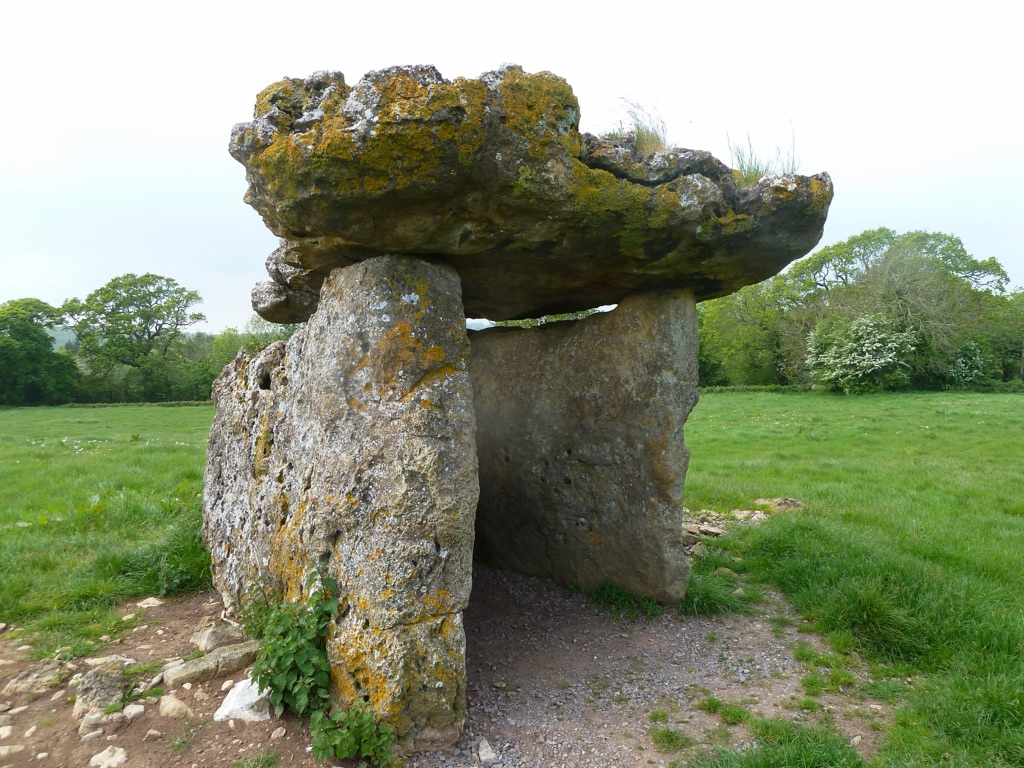
St Lythans Burial Chamber
St Lythans Burial Chamber is a prehistoric dolmen located in the Vale of Glamorgan, Wales. This Neolithic structure, also known as Gwal-y-Filiast, captivates historians and visitors with its large capstone balanced on three upright stones. It dates back to around 4,000 BC and is part of a series of megalithic sites in the region, hinting at a landscape rich with ancient ceremonial significance. The site, managed by Cadw, the historic environment service of the Welsh Government, remains an important link to the past and a subject of ongoing archaeological interest.
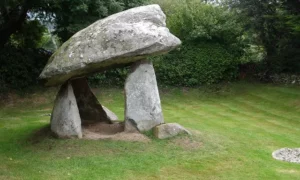
Carreg Coetan Arthur
Carreg Coetan Arthur is a Neolithic dolmen located in Newport, Pembrokeshire, Wales. This ancient burial chamber dates back to around 3000 BC and stands as a testament to the region’s prehistoric past. The name itself translates to ‘Arthur’s Quoit’, which is a reference to the legendary King Arthur, though there is no historical connection to the figure. The site consists of a large capstone resting on upright stones, typical of the megalithic tombs found across Western Europe. Carreg Coetan Arthur is a significant example of early Neolithic funerary practices and provides insight into the rituals and beliefs of the people who built it.
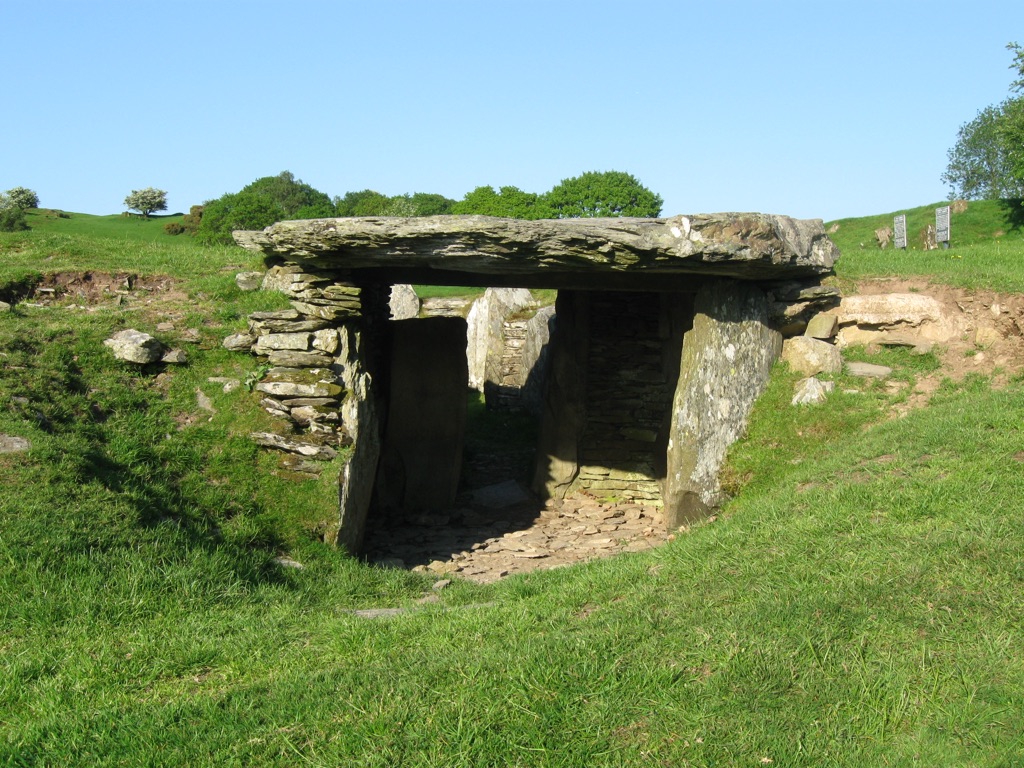
Capel Garmon Burial Chamber
The Capel Garmon Burial Chamber is a Neolithic tomb located in North Wales, near the village of Capel Garmon. Dating back to approximately 3,000 BC, this site is a significant example of the megalithic tombs found across the British Isles. It features a long, narrow passage leading to a rectangular chamber, which was once covered by a large mound of earth. The chamber’s construction showcases the sophisticated stone-working skills of the Neolithic people. Over time, the site has yielded various artifacts, offering insights into the burial practices and spiritual beliefs of its builders.
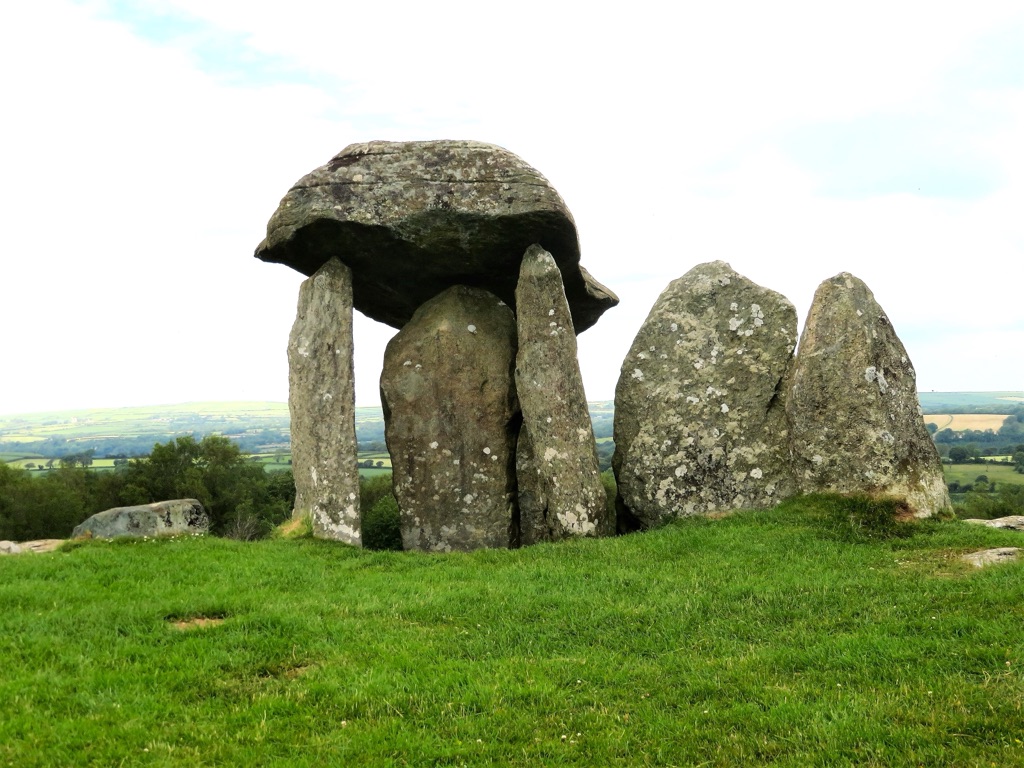
Pentre Ifan
Pentre Ifan is a prehistoric megalithic tomb located in Pembrokeshire, Wales. Known as a cromlech, it is the most popular and well-preserved dolmen in Wales. The structure dates back to around 3500 BC and is a notable example of a burial chamber, typically associated with the Neolithic period. Pentre Ifan consists of a large capstone resting on three upright stones, creating a chamber-like space beneath. It has been a subject of archaeological interest and speculation regarding its original purpose and the people who built it.
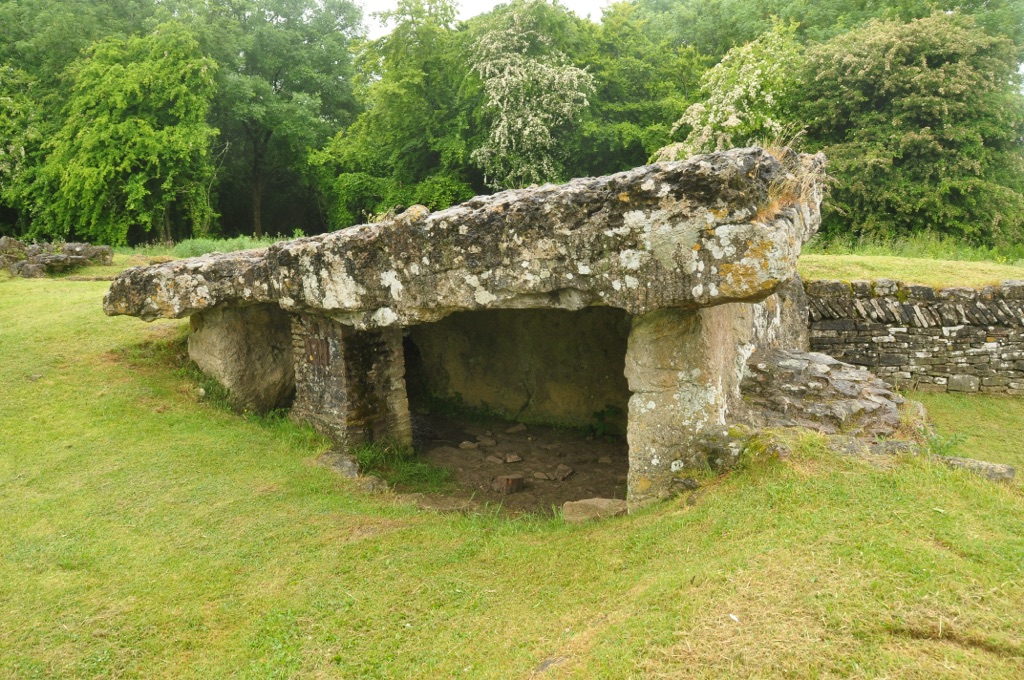
Tinkinswood Burial Chamber
The Tinkinswood Burial Chamber, also known as Castell Carreg, Llech-y-Filiast, or Maes-y-Filiast, is a prehistoric megalithic burial chamber located in the Vale of Glamorgan, near Cardiff, Wales. This Neolithic long barrow dates back to around 6,000 years ago and is particularly notable for its massive capstone, which is one of the largest in Britain. The site was excavated in 1914, revealing human bones, pottery, and flint tools. Tinkinswood has intrigued archaeologists and visitors alike, offering a glimpse into the burial practices and beliefs of early farming communities in the region.

